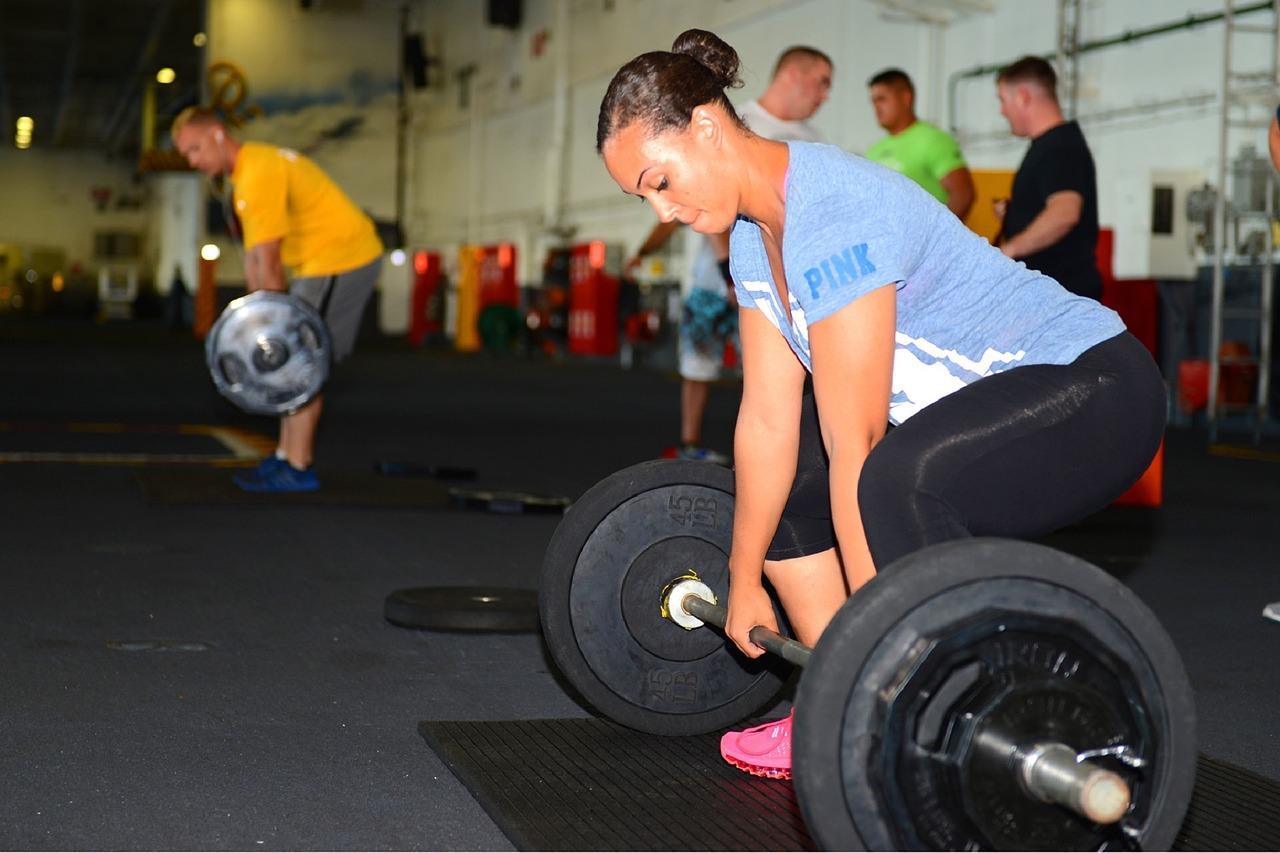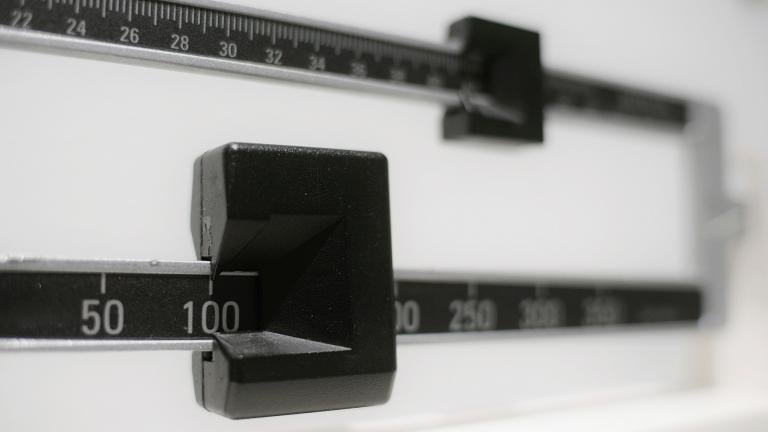
If you’ve started an exercise routine to shed pounds or tone your physique, you’ve likely done some Googling for advice. But beware: Not everything you read online will help you reach your beach bod goals. Some tips may prevent the needle from budging, or even move it in the opposite direction.
Two local dietitians address five of the most common diet and exercise myths, and share advice for reaching fitness goals.
1. Exercise is enough to lose weight.
“You can’t out-exercise a bad diet,” said Kirsten Straughan, a registered dietitian and director of the University of Illinois at Chicago’s nutrition science, kinesiology and nutrition program. “You can’t just use exercise to lose weight. You have to modify your diet in order to lose weight.”
Marathon runners are a prime example. “People sign up for a marathon or a race and they think they’ll get in great shape and lose all this weight, but if you don’t alter your eating habits, you’re not going to lose weight,” said Patricia Sheean, a registered dietitian and assistant professor at Loyola University Chicago. “You need to restrict calories because exercise drives your appetite.”
Straughan recommends people reduce their caloric intake by 500 calories a day to lose about a pound a week in tandem with their exercise routine. “If you’re just starting an exercise program alone, it will not result in a significant amount of weight loss because it is so easy to negate caloric energy output so quickly,” she said. For example, a 30-minute moderate to vigorous aerobic exercise session results in roughly 300-400 calories burned, but those calories will be quickly replaced by consuming a 12 oz. can of soda, which has 500 calories.
2. Lifting weights will make you bulky.
“In order to gain weight, you need to increase calories,” and that goes for muscle as well as fat, Straughan said. “You’ll change your physique and change your body composition [by weightlifting]. But in order to gain more than a couple of pounds of lean mass, you actually need to increase your caloric intake to support that.”
If you actually want to gain weight, you should increase caloric intake by 500 calories a day, in addition to following a weightlifting routine that exceeds the Centers for Disease Control and Prevention’s recommendations. (The CDC recommends adults perform muscle-strengthening activities targeting major muscle groups – legs, hips, back, abdomen, chest, shoulders and arms – at least twice a week.)
Also, people who bulked up weightlifting at a younger age shouldn’t avoid the activity for fear of getting bulky again. “Weightlifting is considered important for bone health,” Sheean said. “How you exercised in your 20s is not how you exercise in your 40s. ... As you get older you have to tailor your workouts more for your age and for injury prevention.”

3. You should hydrate with a sports drink.
“It’s important to stay hydrated,” but water is “just fine,” Sheean said, adding this is a common misconception largely driven by advertising. “It’s important to remember why Gatorade was created for the Florida Gators – they were exercising for hours in humid conditions, losing electrolytes. If you’re not exercising for prolonged periods of time and really sweating, there’s really nothing that needs to be replenished per se.”
4. Protein bars and shakes are a great way to refuel after a workout.
“As long as you’re eating the right types of nutrients, there’s nothing special about a protein shake or bar other than it’s more convenient,” said Straughan. A glass of milk and peanut butter sandwich would also suffice, she added.
But not everybody should be reaching for something to eat after exercising. “We’re talking about hard exercise, not I just went for a walk and now I need a protein bar,” said Sheean.
Only people engaging in moderate to intense endurance or strength-training workouts need to refuel post workout. Within 60-90 minutes of a workout, those individuals should eat in order to “repair muscle tissues that were broken down during the training sessions and to help increase lean mass,” Straughan said.
5. Cut out all sugar and carbs to shed pounds.
“A lot of times with New Year’s resolutions, people say they’re cutting out sugar, and you see diets advertise no sugar,” said Straughan. “There’s a difference between complex carbohydrates, like whole grains, and refined sugar, like Ho Hos, and we shouldn’t put all carbs in the bad box.”
Not sure whether you’re eating (or about to eat) a good carb or a bad one? “Think about the packaging. What else are you getting with the product?” Straughan said. “If you’re eating a Ho Ho, there’s nothing in there but pure calories. You’re not getting nutrients, fiber, minerals, proteins or healthy fats.”
By contrast, complex carbs, like whole grains, starchy vegetables, grains and fruits, are nutrient rich. “You’re getting more bang for your buck with those types of carbs,” she added.
“Carbs are an important source of energy,” Straughan said, adding the body breaks them down into glucose, a type of sugar. “There’s so much advertising that people think a gluten-free diet is a type of diet to help them lose weight, and that is not the case.
“A gluten-free diet is not appropriate for weight loss. It’s only appropriate for people diagnosed with or think they have celiac disease or a gluten intolerance.”

![]()
Tips for reaching fitness goals
Don’t worry if you fell for one of the aforementioned myths. Our experts share their tips to help you get back on track with your fitness goals.
1. Pay attention.
“My number one piece of advice is to be conscience of what you are eating; initially it’s best to track your eating over at least a month so that you can get an exact sense of the number of calories, as well as the types of food you are eating,” said Lara Dugas, assistant professor of public health sciences at Loyola University Chicago. “You can’t change your eating behavior if you don’t know what needs changing.”
2. Change your view.
“Think about changing food habits and the result will be weight loss and healthier status. Change your frame of mind – it’s not short term, it’s not a quick fix. You’re in it for the long term that you can maintain for a lifetime,” Straughan said.
3. Prepare your meals.
“Learning to prepare foods at home that are easy and convenient and healthy ... doesn’t mean you have to be a master chef,” Straughan said. Add vegetables to whole wheat pasta and top with marinara sauce or sprinkle with olive oil and parmesan cheese.
One of Straughan’s go-to meals for her family is corn tortillas with beans, tomato, lettuce, Greek yogurt, a little cheese and salsa.
When in doubt, build a dish around MyPlate, the dietary guidelines by the United States Department of Agriculture Food and Nutrition Service. Half of the plate should be fruits and vegetables, one-quarter should be grains and one-quarter should be lean proteins.
4. Indulge.
“Don’t just cut out food and say you’re never going to eat sugar again,” Straughan said. “Balance between cutting out high-calorie foods that aren’t giving you the nutrients you need and find one to two things you love and fit them in in moderation.”
5. Hide the scale.
“Don’t weigh yourself that often,” said Sheean. “It’s kind of deflating. Go by how you feel and how your clothes are fitting. If you’re sticking to three meals a day and you’re not having seconds, you should see some nice changes – it’ll be slow and gradual.”
Contact Kristen Thometz: @kristenthometz | [email protected] | (773) 509-5452
Related stories:
 What Role Should Data Analysis Play in Health Care Policy?
What Role Should Data Analysis Play in Health Care Policy?
Jan. 17: How evidence-based health care policy can get more value out of the health care system. A discussion with Katherine Baicker, dean of the University of Chicago Harris School of Public Policy.
 Safety Tips for Exercising Outdoors in Winter
Safety Tips for Exercising Outdoors in Winter
Jan. 12: Don’t let frigid weather derail your outdoor exercise routine. With the proper precautions and gear, you can keep it up all winter long, says orthopedic surgeon Dr. Diego Villacis.
 Area Hospitals Race to Keep Up With a Demanding Flu Season
Area Hospitals Race to Keep Up With a Demanding Flu Season
Jan. 10: Health officials say the flu is peaking early this year, with 100 more flu outbreaks statewide than at this time last season. How hospitals are handling the increased volume of patients.








